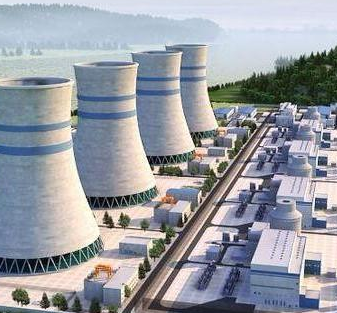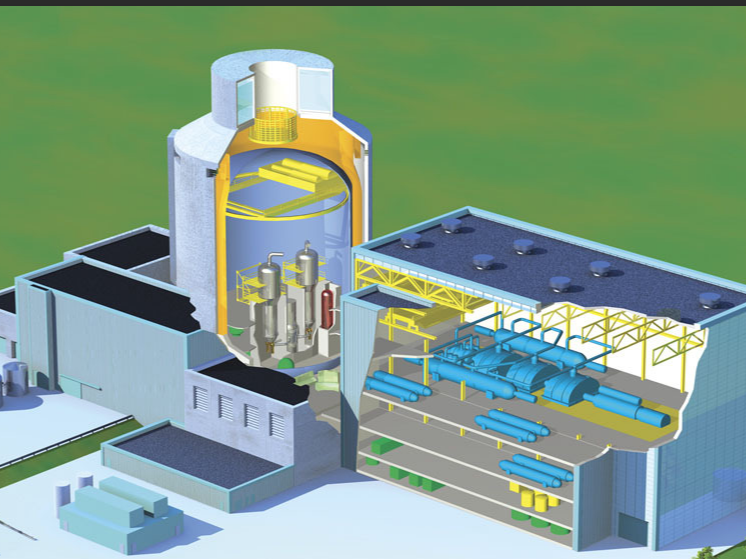Advanced Nuclear Energy Technologies: Towards greater safety and reliability
Peng Zilong told the "Chinese Science Journal" that researchers at the Chinese Academy of Sciences have two efforts in fusion energy technology, one is magnetic confinement of nuclear fusion, and the other is inertial confinement of nuclear fusion.
Magnetic confinement nuclear fusion, through the Tokamak device to generate a strong magnetic field, the plasma is confined in the smallest possible range and it is continuously heated and maintained at tens of millions or even hundreds of millions of degrees to meet the temperature requirements of nuclear fusion.
As early as the 1970s, the Institute of Plasma Physics at the Hefei Institute of Physical Sciences of the Chinese Academy of Sciences in Hefei began research related to nuclear fusion, and in the 1990s, it started the research of magnetic confinement nuclear fusion energy technology - superconducting tokamak.

In 2006, the Eastern hyperloop, known as the "artificial sun", was officially completed, becoming the world's first fully superconducting tokamak device designed and developed by China. In the same year, the Chinese team led by the Chinese Academy of Sciences joined the International Thermonuclear Experimental Reactor project, becoming an important member of the global exploration of "artificial sun" new energy team.
On December 30, 2021, the Eastern Hyperloop achieved a long pulse of high-parameter plasma at 70 million degrees Celsius for 1056 seconds, which is the first time that humans have achieved artificial solar sustained pulses over 1,000 seconds.
In inertial confinement fusion, the fusion material is made into a target pellet of only about one or two millimeters, and then uniformly fired from all sides into a high-energy laser beam to continuously compress and eventually detonate the pellet, forming a miniature "hydrogen bomb" explosion, generating heat energy. To test this principle, the United States completed the National Ignition Facility (NIF) in 2009.
In China, in the 1960s, the Shanghai Institute of Optics and Fine Mechanics of the Chinese Academy of Sciences started the research process of laser inertial confinement nuclear fusion energy in China. In the 1980s, in order to catch up with the pace of international research, Shanghai Institute of Optical Machinery began a large-scale comprehensive laser device - "divine light" pre-research work, and was completed in 1986, and was called "Divine light - I" after the device was retired in 1994. In 2000 and 2015, China has built Shenguang - II laser device and Shenguang - III host laser device and put into use.
Toward 2060: Scientists' Dreams
For more than 10 years from 2011 to now, the development history and current situation of the "Future advanced nuclear fission energy" pilot project have made Peng Zilong see the advantages of the Chinese Academy of Sciences in developing advanced nuclear energy technology.
"At the beginning, when we were planning the research pilot project, our heart was aiming at things 30 years from now." Peng Zilong said that as a national research institution, the Chinese Academy of Sciences must be more forward-looking in analyzing needs and challenges, and thinking about solutions based on scientific origins and laws.
After the clear goal, the Chinese Academy of Sciences mobilized a large scale, comprehensive innovation force. "Each pilot project involves the participation of more than a dozen research institutes." Peng Zilong memories.
He lamented that as a national strategic scientific and technological force, the mission positioning of the Chinese Academy of Sciences determines its stronger innovation ability and desire. "If the country wants to innovate, the Chinese Academy of Sciences can innovate." Peng Zilong said.
Once again, researchers are ramping up their efforts to achieve carbon neutrality.
As a researcher of advanced nuclear fission energy, Zhan Wenlong has a dream: to build a clean energy oasis on the vast desert Gobi, integrating solar energy, wind energy and safer and more reliable nuclear energy technology, and continuously exporting clean and pollution-free power energy to thousands of households.
Zhan Wenlong introduced that they have broken through the key core technology of ADS, and will build the national major science and technology infrastructure "Accelerator Driven Transmutation Research Device" (CiADS) with high standards and high quality from 2020 to 2027 as planned; For ADRUF, a spent fuel dry processing line for simulated fuel demonstration was built at the same time. At the same time, the overall program of ADANES was optimized. Breakthrough in the key technology and process of mass production of rare isotopes under intense irradiation, and carry out the mass production of precision radiotherapy isotopes.

According to the technological progress, by 2032, they will break through the key core technology of ADRUF, complete the construction of the hot chamber system and carry out the research and development of recycled nuclear fuel, and complete the combustion demonstration based on CiADS; Strive to complete the project of "high-density energy fuel research equipment", a major national science and technology infrastructure, and build super-strong broad-spectrum irradiation facilities and related nuclear materials research and development platforms.
- EMERSON
- Honeywell
- CTI
- Rolls-Royce
- General Electric
- Woodward
- Yaskawa
- xYCOM
- Motorola
- Siemens
- Rockwell
- ABB
- B&R
- HIMA
- Construction site
- electricity
- Automobile market
- PLC
- DCS
- Motor drivers
- VSD
- Implications
- cement
- CO2
- CEM
- methane
- Artificial intelligence
- Titanic
- Solar energy
- Hydrogen fuel cell
- Hydrogen and fuel cells
- Hydrogen and oxygen fuel cells
- tyre
- Chemical fiber
- dynamo
- corpuscle
- Pulp and paper
- printing
- fossil
- FANUC
- Food and beverage
- Life science
- Sewage treatment
- Personal care
- electricity
- boats
- infrastructure
- Automobile industry
- metallurgy
- Nuclear power generation
- Geothermal power generation
- Water and wastewater
- Infrastructure construction
- Mine hazard
- steel
- papermaking
- Natural gas industry
- Infrastructure construction
- Power and energy
- Rubber and plastic
- Renewable energy
- pharmacy
- mining
- Plastic industry
- Schneider
- Kongsberg
- NI
- Wind energy
- International petroleum
- International new energy network
- gas
- WATLOW
- ProSoft
- SEW
- wind
- ADVANCED
- Reliance
- YOKOGAWA
- TRICONEX
- FOXBORO
- METSO
- MAN
- Advantest
- ADVANCED
- ALSTOM
- Control Wave
- AB
- AMAT
- STUDER
- KONGSBERG
- MOTOROLA
- DANAHER MOTION
- Bently
- Galil
- EATON
- MOLEX
- Triconex
- DEIF
- B&W
- ZYGO
- Aerotech
- DANFOSS
- KOLLMORGEN
- Beijer
- Endress+Hauser
- MOOG
- KB
- Moxa
- Rexroth


Email:wang@kongjiangauto.com








































































































